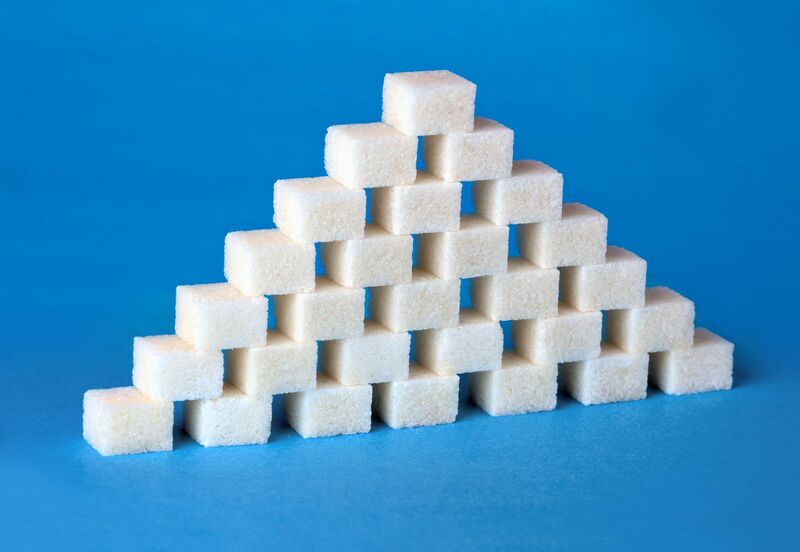
On July 10, in my Q2 report on soft commodities on Barchart, I highlighted the sugar future’s 2.43% Q2 gain and its 13.72% price appreciation over the first six months of 2023. Nearby sugar futures settled at 22.79 cents per pound on June 30, 2023, after rising to 27.41 cents in April 2023, the highest price since October 2011. While sugar futures did make a higher high in July or August, the sweet commodity is higher on September 1 at near the 26 cents per pound level as it continues consolidating gains near the April high. The Teucrium Sugar ETF product (CANE) tracks a portfolio of ICE sugar #11 futures prices.
The difference between Sugar #11 and Sugar #16
Sugar’s role as an essential food ingredient has caused governments worldwide to subsidize domestic production through price supports. The theory is that supplies will remain sufficient to meet all requirements when prices fall to levels that make production uneconomic.
In the U.S., sugar #11 futures reflect the price of worldwide free-market sugar. Sugar #16 is the U.S. government subsidized price. On September 1, the #11 futures for October 2023 delivery settled at 25.81 cents per pound, with the #16 futures for November 2023 delivery 14.72 cents higher at 40.53 cents per pound.
Both sugar contracts have rallied
Sugar # 11 and #16 futures have moved higher since reaching bottoms in early 2020 as the global pandemic gripped markets across all asset classes.

The chart highlights sugar #11’s April 2020 9.05 low. The price rallied 203% to 27.41 cents in April 2023. The recent peak was the highest price since 2011. At 25.81 on September 1, free-market sugar futures remain near the recent high.

The chart shows the bullish pattern in subsidized sugar #16 futures, reaching a record 43.50 cents per pound high in April 2023. At over 40.50 cents on September 1, the U.S. subsidized sugar futures remain near record territory.
Higher oil prices support rising sugar prices
Brazil is the leading free-market sugar-producing country. While the U.S. processes corn into ethanol, sugarcane is the primary ingredient in Brazilian ethanol production. Therefore, crude oil prices can impact world sugar prices.

The chart shows the 34.6% rise in nearby NYMEX crude oil futures from $63.57 per barrel in early May to $85.55 on September 1. Higher crude oil and oil product prices will likely cause more Brazilian sugarcane demand for ethanol processing, leading to fewer global sugar supplies and higher prices.
Input costs continue to increase
Aside from crude oil, inflation at the highest level in decades is increasing production costs, forcing free-market prices and subsidies higher. While the U.S. dollar is the pricing mechanism for free-market sugar, in Brazil, production costs are in local currency, the real.

The chart shows the slightly bullish trend in real versus the U.S. dollar currency relationship since early 2020. A rising real means it costs more to produce Brazilian sugar, as labor is a leading expense.
CANE tracks sugar prices
The trend is always your best friend and remains bullish in subsidized and free-market sugar futures. Technical resistance is at the April 2023 27.41 high. Above there, the August 2011 31.85 cents and the February 2011 36.08 cents highs are technical targets.
The most direct route for a risk position in sugar is via the liquid Sugar #11 ICE futures. The Teucrium Sugar ETF (CANE) holds three ICE sugar futures contracts to minimize roll risks. At $14.25 per share on September 1, CANE had $24.7 million in assets under management. CANE trades an average of 47,805 shares daily and charges a 0.22% management fee.
Sugar futures rose 203% from 9.05 cents in April 2020 to 27.41 cents in April 2023.

Over the same period, CANE moved 192% higher from $4.91 to $14.33 per share. Since most price volatility tends to occur in the nearby contract as it attracts the most speculative interest, the CANE portfolio of three contracts makes the ETF underperform on the upside. However, CANE tends to outperform the nearby contract during downside corrections.
All signs are that sugar prices will continue to make higher highs over the coming weeks and months. Since bull markets rarely move in straight lines, buying on price weakness during corrections will likely provide optimal returns.
On the date of publication, Andrew Hecht did not have (either directly or indirectly) positions in any of the securities mentioned in this article. All information and data in this article is solely for informational purposes. For more information please view the Barchart Disclosure Policy here.






